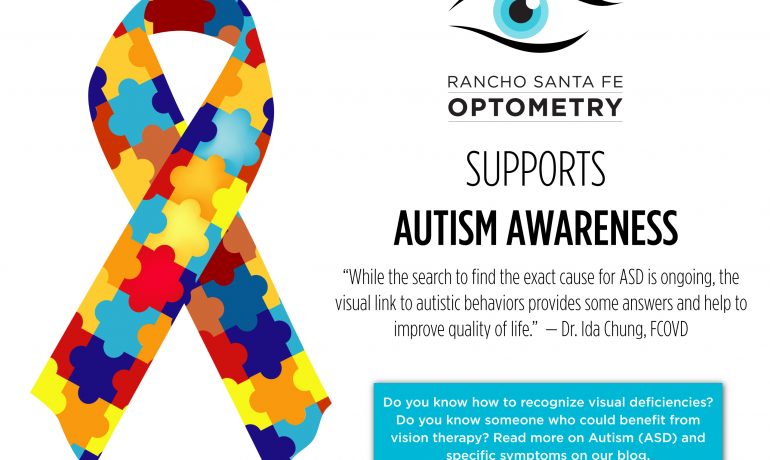What is Autism?
Autism is a neurobiological disorder. People with autism have difficulty processing and responding to information from their senses. They also have difficulties with communication and social interaction. Symptoms of autism can include lack of reciprocal social interaction, delays in development, and inappropriate response to sensory information.
1. Lack of eye contact 2. Staring at spinning objects or light 3. Fleeting peripheral glances 4. Side viewing 5. Difficulty maintain visual attentionVisual Problems and Autism
Visual problems are very common in individuals with autism. Visual symptoms of autism can include lack of eye contact, staring at spinning objects or light, fleeting peripheral glances, side viewing, and difficulty attending visually.
Autistic people often use visual information inefficiently. They have problems coordinating their central and peripheral vision. For example, when asked to follow an object with their eyes, they usually do not look directly at the object. Instead, they will scan or look off to the side of the object. Autistic individuals might also have difficulty maintaining visual attention. Eye movement disorders and crossed eyes are common in the autistic spectrum.
Poor Integration of Central and Peripheral Vision
Autistic individuals can also ignore peripheral vision and remain fixated on a central point of focus for excessive periods of time. Poor integration of central and peripheral vision can lead to difficulties in processing and integrating visual information in autistic individuals. Motor, cognitive, speech, and perceptual abilities can also be affected when visual processing is interrupted.
Hypersensitive Touch and Vision
Many people with autism are tactually or visually defensive. Tactually defensive people are easily over-stimulated by input through touch. They are always moving and wiggling. They avoid contact with specific textures. Visually defensive persons avoid contact with specific visual input and might have hypersensitive vision. They have difficulty with visually “holding still” and frequently rely on a constant scanning of visual information in an attempt to gain meaning.
Vision Exams for Autistic Patients
Methods for evaluating the vision of people with autism will vary depending on individual levels of emotional and physical development. Testing is often done while the patient is asked to perform specific activities while wearing special lenses. For example, observations of the patient’s postural adaptations and compensations will be made as he or she sits, walks, stands, catches and throws a ball, etc. Such tests help to determine how the autistic person is seeing and how he or she can be helped.
Treatment of Visual Problems Associated with Autism
Depending on the results of testing, lenses to compensate for nearsightedness, farsightedness, and astigmatism (with or without prism) may be prescribed. Vision Therapy activities can be used to stimulate general visual arousal, eye movements, and the central visual system. The goals of treatment may be to help the autistic patient organize visual space and gain peripheral stability so that he or she can better attend to and appreciate central vision and gain more efficient eye coordination and visual information processing. Many COVD doctors are experienced in examining and treating autistic people as well as other developmentally delayed or non-verbal individuals.
Content originally posted here
At Rancho Santa Fe Optometry we offer comprehensive eye examinations for all ages. With a focus on children’s vision and vision therapy, our doctors test for visual acuity, visual efficiency skills and visual information processing starting in early infancy. The practice also provides diagnosis, treatment and management of diseases that affect the human eye and visual system, including dry eye syndrome, diabetic retinopathy, cataracts, macular degeneration and keratoconus.
